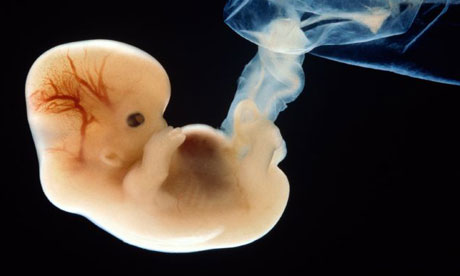The idea of Designer babies is becoming a rising topic all throughout the world. The main source of debate is the ethical side of this idea, but most people don’t realize the scientific side of it, which is truly amazing. The beginning of this discovery for creating your own baby was brought up in 1978, with the birth of Louise Brown, who was known as the first test tube baby. Louise Brown was born because her parents were not able to conceive for nine years, but ever since the birth of Brown doctors have been considering the idea of creating babies to fit the desires of the parents. Below you can see a picture of the Browns and their healthy baby girl. The idea of creating a baby outside of the mother was brought about by Patrick Steptoe and Robert Edwards.
This procedure is done by taking the egg out of the mother and doing further modify and then replacing it back in the mother. Using specific tools the doctors have control on the alteration. If this processes is used to because of a genetic disease that the baby is prone to having the doctor purpose is to take out one of the four main cells that could infected. Scientists recently have created genetically modified mice by modifying the cells that give rise to sperm, and using these resulting sperm for fertilization. In addition, scientists have genetically modified human embryonic stem cells. These techniques overcome what were long regarded as impenetrable technical barriers.
In about 1960 Robert Edwards started to study human fertilization, and he continued his work at Cambridge. In 1968 he was able to achieve fertilization of a human egg in a lab verses in the mother and then started to work with Patrick Steptoe. Robert Edwards developed human culture media to allow the fertilization and early embryo culture. Both Robert Edwards and Patrick Steptoe made medical history with the birth of Louise Brown. On 4 October 2010, Robert Edwards was awarded the 2010 Nobel Prize in Physiology or Medicine for the development of in-vitro fertilization
There are many arguments both for and against this idea for designer babies. There is the idea that we should be Using whatever techniques are available to help prevent certain genetic diseases will protect children from suffering debilitating diseases and deformities and reduce the financial and emotional strain on the parents, but the argument against it is that we could get carried away correcting perfectly healthy babies. In this video professor, Lee Silver better explains the idea of what designer babies really are.
In the journal article, Designer Babies: Eugenics Repackaged or Consumer Options? the Forces Pushing Humanity towards Attempts at Self-Modification, through Biological and Technological Advances, Are Powerful, Seductive Ones That We Will Be Hard-Pressed to Resist by Stephen L. Baird, it goes into the main reasoning’s why to go into creating designer babies and why not to. It list important arguments and ethical things to consider and gives a vivid description on how the procedure is done. There are many risks in doing this, but it could help when dealing with genetic diseases. The main fear, however is that if the doctors give a little with helping sick babies, people may take a lot and try to change the genetic makeup of their own child. There are many factors to think about when it comes to Designer Babies, and it will most likely be an ongoing topic for a long time.
References:
Genetic Engineering and the Future of Human Evolution. (2006). Future Human Evolution Organization. Retrieved September 19, 2006 from www.human-evolution.org/geneticbasics.php
Inheritable Genetic Modification. (2003). Center for Genetics and Society. Retrieved October 05,
Robert G. Edwards." Wikipedia, the Free Encyclopedia. Web. 13 Oct. 2010. <http://en.wikipedia.org/wiki/Robert_G._Edwards>.
Walsh, F. (2004). Brother's Tissue "Cures" Sick Boy. BBC News. Retrieved September 27, 2006 from http://news.bbc.co.uk/1/hi/health/3756556.stm 2006 from www.gene-watch.org/programs/cloning/germline_position.html



No comments:
Post a Comment